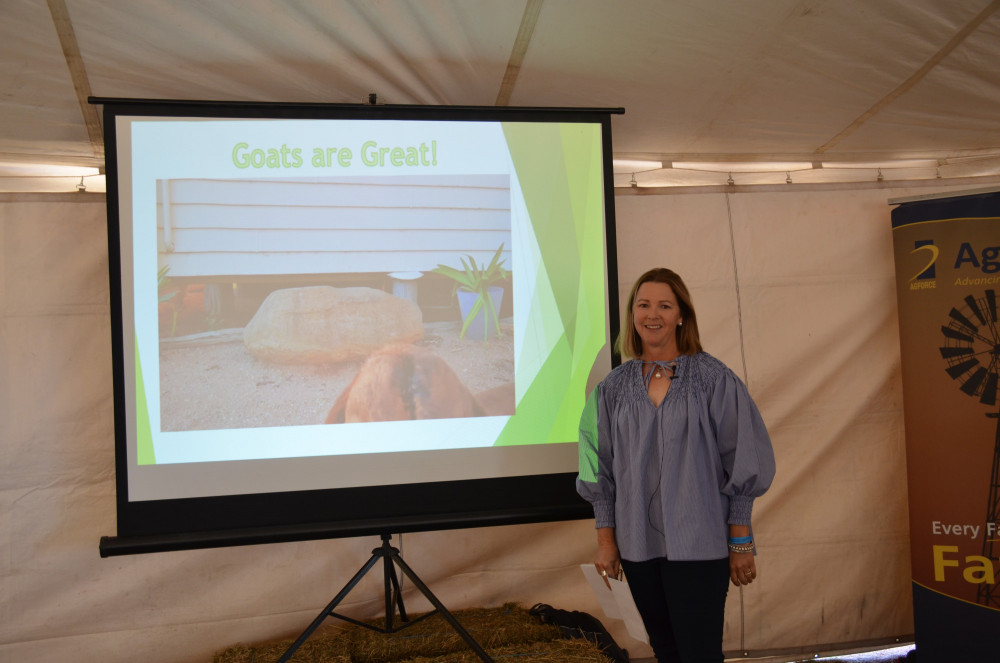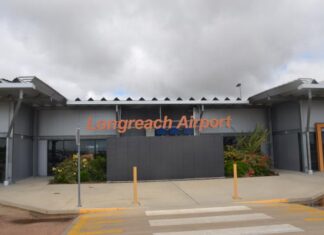AGFORCE’S Westech program was filled with intriguing presentations on the future of agriculture, one such came from a Blackall producer who touted the future of goat farming.
Seaford Red Goats and Taylor Dennis Pastoral owner Anita Dennis said she believes due to seasonal changes in the west, goats are more sustainable than other meat products.
“They’re easier on our country types and they are providing a fantastic return,” she said.
Ms Dennis said she believes there were a few hurdles between the goat industry becoming fully integrated into the mainstream west.
“You have to have your infrastructure in place when you sign up with goats,” she said.
“That does take the people a little while to see that huge cost at the beginning and think ‘will it be worth it?’”.
Ms Dennis believes in a huge future for goats.
“I think every single producer will be having some sort of goats here [in the west],” she said.
“I would like to be cheeky and say, I think goat meat will be the largest source of protein in Australia.”
During her presentation, Ms Dennis said several graziers currently ‘top their beer supply’ by harvesting wild goats.
Ms Dennis said she was originally forced to swap to goats due to the pressures of wild dogs.
“We were on an enterprise mixed rollercoaster,” she said.
“We were forced to move from our self-replacing sheep flock and into beef cattle, but we knew the seasons in Western Queensland would mean cattle weren’t going to be sustainable.
“But, we didn’t think we had much choice — a couple of years after the sheep were gone, we started seeing Gidgee encroachment on our Mitchell grass and buffel country.”
Ms Dennis said that was when her company started looking at numbers.
“If we ran a chain over our country, we were looking at about $10 an acre; if we were going to blade cut our country, we were looking at $85 an acre, and something similar, if we were going to cull it,” she said.
“Another issue was that if we controlled our encroachment, we still wouldn’t have the autonomy over our grazing pressure from external forces.
“We crunched the numbers and looked at the cost of exclusion fencing, and the return of running an alternative enterprise.”
Ms Dennis said the numbers had stacked up for exclusion fencing for her business; however, there was a problem.
“Coolagh, with its two river systems running through it, made it impossible to fence in its entirety,” she said.
“So, we started off with our most productive block of land and ran 25 kilometres of exclusion fencing around it.”
Ms Dennis said in that fence they kept wild goats they had caught from the river system running through their land.
“We put them to work and controlling Gidgee encroachment,” she said.
”Within a year, we still had grass in the paddock after the growing season, and we could see a browse line from the goats in that paddock.
“We headed the universe’s recommendation and erected another 76 kilometres of fencing around the remaining area of Coolagh.”
Ms Dennis said 10 years on they had seen a larger variety of grass species on Coolagh.
“After one rain event, I counted 18 different grass species,” she said.
“We are now working, as a part of our management plan, on how we can retain our woody weeds for goats.”
Ms Dennis said after conducting a survey with other goat producers that goats created a far more sustainable return than sheep and cattle.






